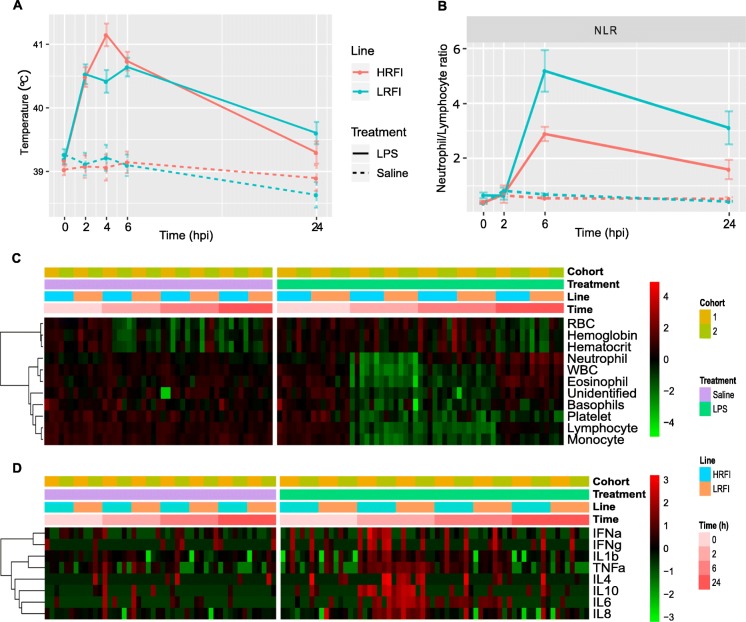Fig. 2.
Intramuscular injection of LPS induced systemic inflammation. a LPS, but not saline, induced a fever response in pigs. The rectal temperature of pigs treated with LPS was significantly higher than baseline at 2, 4 and 6 hpi. Notably, the mean rectal temperature was significantly lower in the low-RFI animals than in the high-RFI animals at 4 hpi (adjusted p < 0.0075). At 6 hpi, the mean rectal temperature tended to be lower in the low-RFI animals than in the high-RFI lines, but this tendency reversed by 24 hpi. Shown are profiles of least square means of rectal temperature for the two lines at each time point after injection with LPS or saline. Error bars show standard errors of the means of rectal temperature of each line at each time point. b Neutrophil/lymphocyte ratios changed over the time course of the study in response to LPS stimulation. The neutrophil/lymphocyte ratio (NLR) was significantly higher at 6 and 24 hpi in the low-RFI animals than in the high-RFI lines treated with LPS (p < 0.03, two sided Mann-Whitney U test). c Dynamic CBC profiles in response to LPS or saline treatment showed LPS injection triggered inflammation in pigs of both lines, while saline did not. The quantity of each CBC parameter was standardized by normal transformation and displayed as a heatmap. d Cytokine dynamic profiles in response to LPS or saline injection in pigs. Cytokine concentrations were standardized by normal transformation and displayed as a heatmap. HRFI, high-RFI line; LRFI, low-RFI line

